Alex Auvolat
Diet Networks: Thin Parameters for Fat Genomics
Mar 16, 2017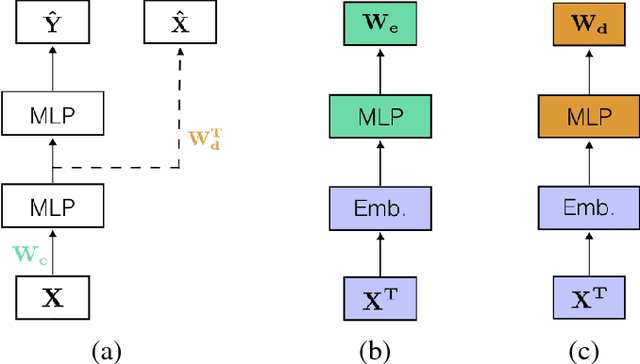
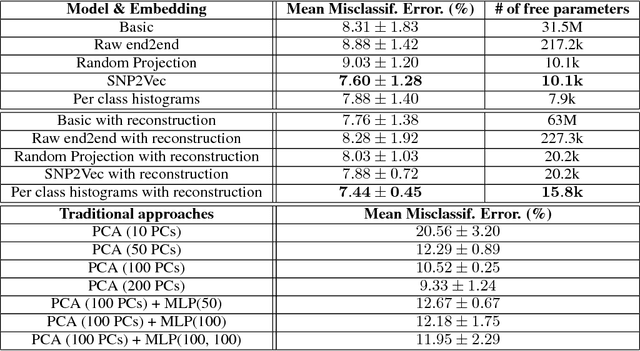
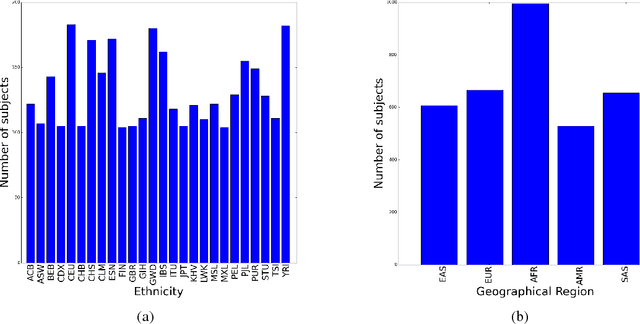
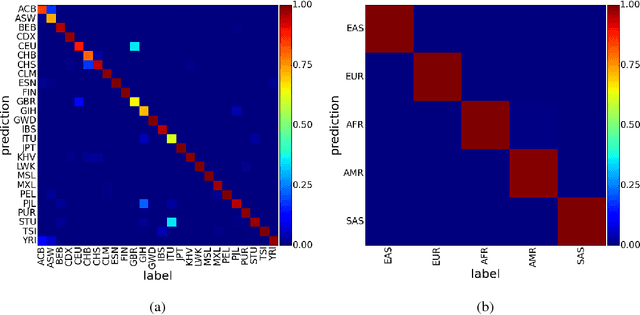
Abstract:Learning tasks such as those involving genomic data often poses a serious challenge: the number of input features can be orders of magnitude larger than the number of training examples, making it difficult to avoid overfitting, even when using the known regularization techniques. We focus here on tasks in which the input is a description of the genetic variation specific to a patient, the single nucleotide polymorphisms (SNPs), yielding millions of ternary inputs. Improving the ability of deep learning to handle such datasets could have an important impact in precision medicine, where high-dimensional data regarding a particular patient is used to make predictions of interest. Even though the amount of data for such tasks is increasing, this mismatch between the number of examples and the number of inputs remains a concern. Naive implementations of classifier neural networks involve a huge number of free parameters in their first layer: each input feature is associated with as many parameters as there are hidden units. We propose a novel neural network parametrization which considerably reduces the number of free parameters. It is based on the idea that we can first learn or provide a distributed representation for each input feature (e.g. for each position in the genome where variations are observed), and then learn (with another neural network called the parameter prediction network) how to map a feature's distributed representation to the vector of parameters specific to that feature in the classifier neural network (the weights which link the value of the feature to each of the hidden units). We show experimentally on a population stratification task of interest to medical studies that the proposed approach can significantly reduce both the number of parameters and the error rate of the classifier.
TorchCraft: a Library for Machine Learning Research on Real-Time Strategy Games
Nov 03, 2016
Abstract:We present TorchCraft, a library that enables deep learning research on Real-Time Strategy (RTS) games such as StarCraft: Brood War, by making it easier to control these games from a machine learning framework, here Torch. This white paper argues for using RTS games as a benchmark for AI research, and describes the design and components of TorchCraft.
Clustering is Efficient for Approximate Maximum Inner Product Search
Nov 30, 2015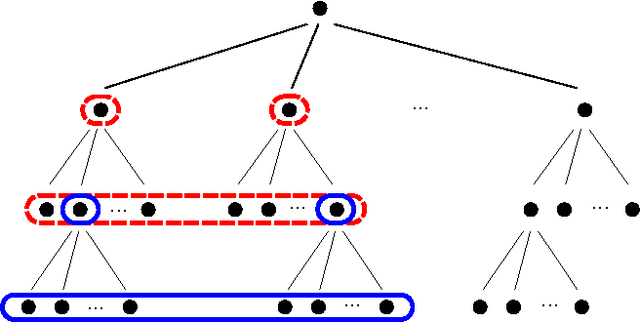
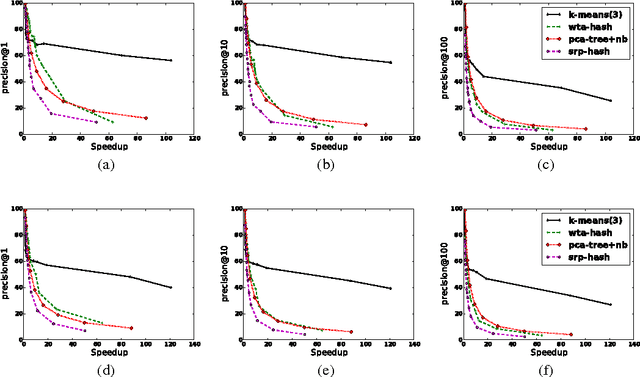


Abstract:Efficient Maximum Inner Product Search (MIPS) is an important task that has a wide applicability in recommendation systems and classification with a large number of classes. Solutions based on locality-sensitive hashing (LSH) as well as tree-based solutions have been investigated in the recent literature, to perform approximate MIPS in sublinear time. In this paper, we compare these to another extremely simple approach for solving approximate MIPS, based on variants of the k-means clustering algorithm. Specifically, we propose to train a spherical k-means, after having reduced the MIPS problem to a Maximum Cosine Similarity Search (MCSS). Experiments on two standard recommendation system benchmarks as well as on large vocabulary word embeddings, show that this simple approach yields much higher speedups, for the same retrieval precision, than current state-of-the-art hashing-based and tree-based methods. This simple method also yields more robust retrievals when the query is corrupted by noise.
Artificial Neural Networks Applied to Taxi Destination Prediction
Sep 21, 2015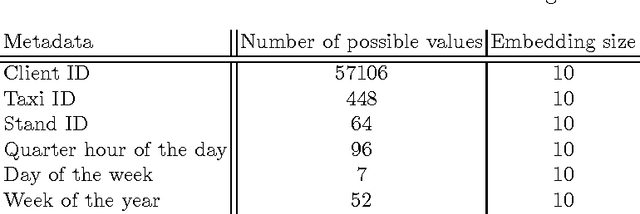
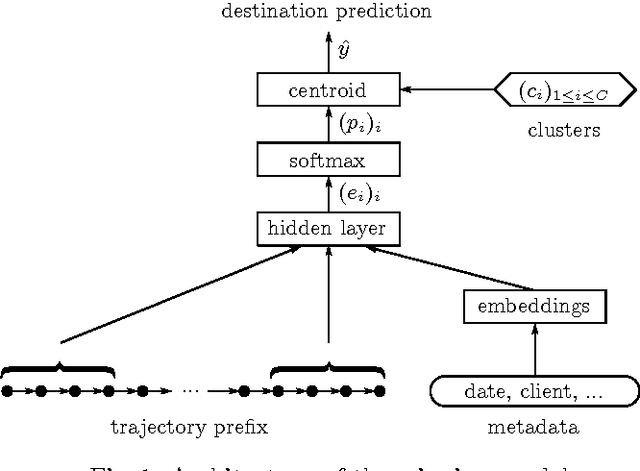

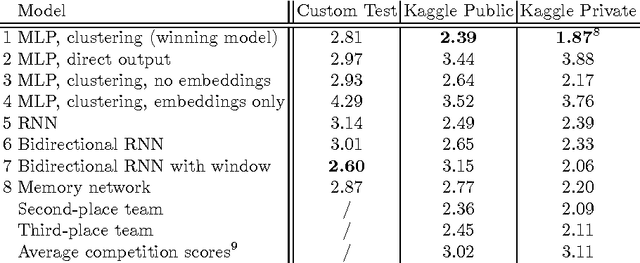
Abstract:We describe our first-place solution to the ECML/PKDD discovery challenge on taxi destination prediction. The task consisted in predicting the destination of a taxi based on the beginning of its trajectory, represented as a variable-length sequence of GPS points, and diverse associated meta-information, such as the departure time, the driver id and client information. Contrary to most published competitor approaches, we used an almost fully automated approach based on neural networks and we ranked first out of 381 teams. The architectures we tried use multi-layer perceptrons, bidirectional recurrent neural networks and models inspired from recently introduced memory networks. Our approach could easily be adapted to other applications in which the goal is to predict a fixed-length output from a variable-length sequence.
 Add to Chrome
Add to Chrome Add to Firefox
Add to Firefox Add to Edge
Add to Edge